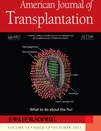Suppression and Regulation of Immune Responses: Methods and Protocols edited by Maria Cristina Cuturi, Ignacio Anegon
Suppression and Regulation of Immune Responses: Methods and Protocols . Series: Methods in Molecular Biology , Vol. 677 by Maria Cristina Cuturi, Ignacio Anegon ( Editors ), First Edition , Humana Press , 2011 .
Since the discovery of T cells showing a suppressive phenotype, the study of immune regulation has rapidly expanded and advanced, with dozens of “regulatory” cells and molecules described, particularly in the past two decades. Suppression and Regulation of Immune Responses, edited by Maria Cristina Cuturi and Ignacio Anegon, aims to consolidate this information into a single volume, with a particular focus on in vitro protocols for cell-based experiments. The book, part of the successful Methods in Molecular Biology series from Springer Protocols, divides the topic of immune regulation into three areas: regulatory cells, regulatory molecules and pathophysiological situations, with each section broken into chapters written by well-respected, seminal investigators in the specified field.
The first section, on regulatory cells, focuses almost entirely on methods for the isolation, characterization and generation of these cells, covering various regulatory T-cell subsets, regulatory B cells, dendritic cells, myeloid-derived cells, macrophages, natural killer T cells, mast cells and stem cells. It emphasizes the clinical applications of regulatory cell research while providing the detailed protocols necessary for successful adaptation of these methods into current research. While the individual chapters focus on a single technique, the background material included in each chapter is detailed enough that the book can almost serve as an introductory primer to the various types of regulatory cells. Of equal value are the Notes sections at the end of each chapter, which include helpful hints for success that would otherwise be discovered by trial, error and some avoidable frustration.
Although the section on regulatory cells is methods-focused, both the regulatory molecules and pathological situations sections are almost entirely descriptive, with just two chapters on molecules including specific protocols. The regulatory mechanisms involving the molecules heme oxygenase-1, indoleamine 2,3-dioxygenase, galectin and glycan, nitric oxide and TGF-β are all exhaustively described, though no specific methods are included. These chapters are useful for their comprehensive approach; investigators are exposed to these molecules’ full array of targets and regulatory mechanisms. More specific methods are described for the ex vivo expansion of regulatory T cells through IFN-γ conditioning (an interesting technique given that IFN-γ is typically thought to be a proinflammatory cytokine) and the induction of tolerogenic dendritic cells using NF-κB inhibitors and modulation of Fcγ receptors. While the group of molecules described in this section is extensive, it is by no means comprehensive. Chapters on CD39, an important marker of regulatory T cell(s) involved in control of extracellular adenosine triphosphate levels, and novel immunosuppressive molecules such as the recently described IL-35 are noticeably lacking.
Situation- or site-specific regulatory effects are described in the third section of the book, with particular focus on pregnancy, transplantation, viral infection and ocular and testicular immune privilege. These chapters broadly cover the associated cells and regulatory phenomena with an emphasis on therapeutic approaches.
Overall, the book provides a comprehensive overview of regulatory cells and mechanisms, especially the detailed methods necessary to isolate, characterize and generate these cells. It describes several important regulatory molecules and five characteristic examples of immune privilege and tolerance.
Because the book is organized as a series of discrete articles, some larger pieces of the narrative are missing. For example, most chapters are devoted to either rodent or human regulatory T cell(s) cells, but fail to evaluate the differences between human and mouse regulatory mechanisms that may be important in evaluating the translational potential of a given protocol. An exception is van Kooten and Gelderman's excellent protocol for the generation of tolerogenic dendritic cells, which describe human and mouse methods side-by-side. In some cases, such as the chapter on regulatory T cell(s) by Hutchinson and colleagues, only the human protocol is described, but reference to parallel studies in mice is provided.
Despite this shortcoming, the book provides an excellent overview of regulatory mechanisms and the latest techniques available to identify, separate, characterize, generate and culture regulatory cells. Many of the methods provided are easily adaptable for various scientific approaches. It would be an invaluable resource for a graduate student entering the field of immune regulation, and is potentially a useful volume for any laboratory studying transplantation, tumor immunology or autoimmunity, especially those exploring cell-based therapies. It is likely that even laboratories already focused on immune regulation have something to learn from this volume. Indeed it may serve as a handbook for the ONE Study, an EU-sponsored clinical multicenter trial currently underway in Europe to assess the value of ex vivo-expanded human regulatory cells in clinical kidney transplantation.




